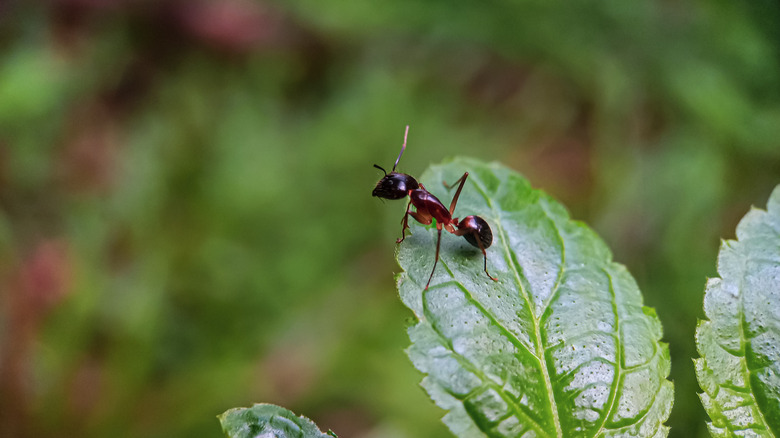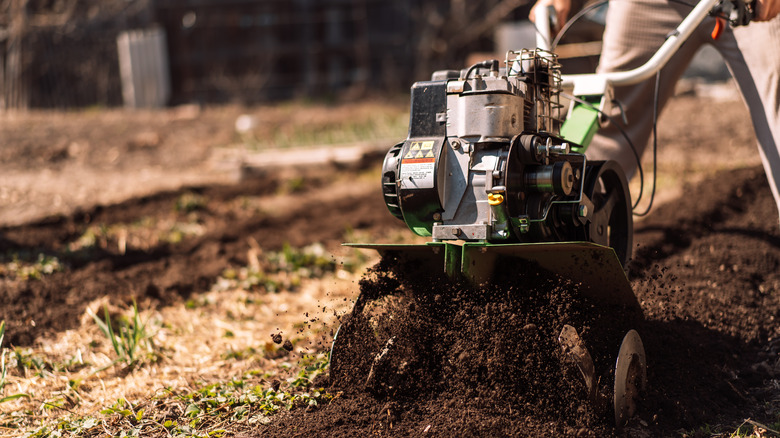The Essential Lawn Task That Keeps Ants From Building Hills In Your Yard
Ants are a common concern among homeowners, especially once they start building nests in your yard. With the exception of fire ants, most ant species do not cause harm to humans and pets, and they may even be beneficial to have in your garden. As such, you may want to leave the ants in your garden alone. Nevertheless, these insects are still known to cause potential damage to lawns during the nesting process. Also called ant hills, these nests are the result of the ants building extensive tunnels and using the soil underneath your yard. Destroying an ant hill is one way to mitigate unwanted nesting in your yard, but other preventive measures, such as tilling, may be warranted in certain cases.
Tilling is not the best way to prevent ant hills for grass-containing lawns because it inevitably removes grass and can prevent it from growing back. One exception to this rule is tilling before laying down new sod or planting grass seeds. For cases of existing grass though, you might instead consider removing any ant hills with rakes or streams of water whenever they pop up. Commercial insecticides may be used for ant hills on lawns when other methods fail, but keep in mind that these will not necessarily prevent ants from attempting to nest. Aerating your lawn and raking previously occupied ant hills across your yard can also help improve the overall health of your grass. Keeping the grass cut to a height of 3 inches is yet another way to maintain the health of your lawn and discourage overall ant activity.
How to use tilling practices to control ant hills around your yard
Outside of a grass lawn, there are situations where tilling may help prevent ant hill formation. Tilling itself is a process that involves either machines or hand tillers to help turn over existing soil before planting new crops. Proponents of tilling argue that the process may help improve overall soil quality for healthier plants by breaking up compacted soil and organic matter from old plants. You will also need to consider the downsides, which may make you think twice before tilling your garden. Still, tilling may prevent ant nests from forming at the start of the season and even help destroy tunnels within the soil. You may still need to physically remove ant hills that form, and you should always flatten them with machines or tools before tilling the soil.
When considering tilling for ant nests, it's best to use this as a preventive measure with other control strategies you have in place. As a rule of thumb, tilling is typically done in spring or at the end of fall when the growing season is over. Also, despite the possible benefits of tilling for ant hill prevention, the process is not suitable for all types of yards. Instead, this method works best on large plots of land, such as fields, as well as in garden beds. If you continue to experience frequent ant nesting on your lawn despite physical removal methods, consider consulting with a pest control company to help you prevent ant hills from showing up in your yard.

